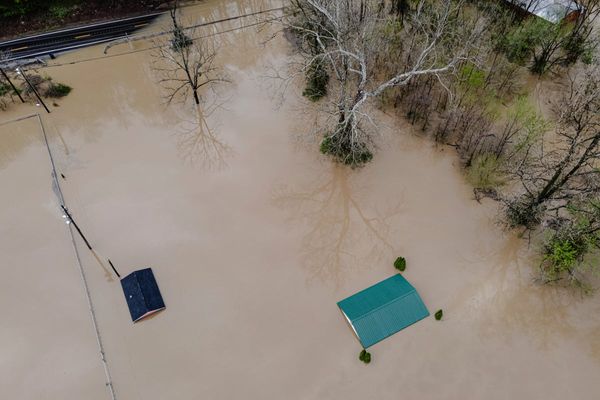
I must confess that when a ProPublica-Vanity Fair collaboration detailing new revelations from a US Senate intelligence committee investigation pointing toward a lab leak origin of the Covid pandemic crossed my social media radar, I retweeted it after a brief skim.
After all, I already believed that many in the press had unfairly dismissed the lab leak theory in 2020. Indeed, before Covid was on the radar at all I already believed that lab leaks were an underrated threat to humanity and that the style of research that seeks to uncover new dangerous viruses in the wild or engineer them in labs is risky and should be halted. So I was sufficiently excited about the new blockbuster revelations found in Toy Reid’s translations of previously unknown official Chinese documents that I didn’t kick the tires on the piece rigorously.
Which is too bad, because as Max Tani details in Semafor, other Chinese speakers have raised grave questions about the veracity of the translations in the ProPublica story which is now reportedly being reviewed with the assistance of additional independent Mandarin translators. That’s embarrassing for me and the whole affair is embarrassing to lab leak proponents generally.
And yet I was so itchy with the trigger finger because I really do believe the tendency two years ago to dismiss the lab leak concept as a conspiracy theory was a huge mistake. Lab leaks are just not that rare. Martin Furmanski, writing for the Center for Arms Control and Nonproliferation in 2014, recounted that “at least 80 cases and three deaths were the result of three separate escapes of the smallpox virus from two different accredited smallpox laboratories” over a 15-year period during the global eradication campaign.
Furmanski also documents leaks of foot and mouth disease, Venezuelan equine encephalitis, and H1N1 influenza. In the 1970s, a significant anthrax outbreak was caused by leaks from a Soviet lab. He was writing not in the context of the Covid pandemic but of the near-miss with Sars, observing that “there have been six separate ‘escapes’ from virology labs studying it: one each in Singapore and Taiwan, and in four distinct events at the same laboratory in Beijing”.
Fortunately, just as the natural occurrence of Sars didn’t become a huge pandemic, neither did any of the lab escapes.
The point, however, is that lab escapes of viruses are a very real problem, and when you get a new outbreak of a bat coronavirus in a city that contains two labs dedicated to studying bat coronaviruses, it’s a completely reasonable thing to be suspicious about. And indeed the fact that Joe Biden ordered a review of the relevant intelligence and the intelligence community came back with the finding that lab leak was just as credible as natural origins never got the attention it deserved.
Long story short, the notion of a lab leak is far from proved, but it’s also not a Trumper conspiracy theory.
The boring truth is that we’ll almost certainly never really know what happened, because the Chinese government isn’t going to let western intelligence agencies rummage around their virus labs. They wouldn’t allow that if they were covering up a lab leak, but they wouldn’t allow it if they weren’t covering up a lab leak either – the sharp deterioration in the US-China relationship simply means there isn’t going to be a thorough cooperative inquiry.
But at the end of the day, the quest for lab leak evidence matters politically but not for policy.
Those of us interested in the subject care because we think that strong evidence for a laboratory origin will strengthen our hand in the debate about dual use virus research. Right now many scientists believe that searching for deadly new viruses in obscure corners of the world or even deliberately designing such viruses in labs has important public health benefits. And there is a kind of superficial plausibility to this. In order to develop cures and vaccines, you need to study viruses. Finding and creating new viruses can help us understand viruses better, and thus perhaps develop better cures and vaccines.
Except it’s notable that in the face of the actual Covid emergency, none of this dual use research helped with anything.
The mRNA vaccines developed by Pfizer and Moderna didn’t rely on anything happening in dual use labs. Instead, Chinese scientist Yong-Zhen Zhang posted the genetic sequence of the Sars-Cov-2 virus on the internet on 11 January 2020. Just two days later, Moderna scientists had designed their vaccine based on the genetic data. The reason vaccines weren’t licensed until 10 months later was that the protocol for running clinical trials is time-consuming. And the reason vaccines weren’t widely available until months after they were licensed is that creating the infrastructure to manufacture the vaccines at large scale took time.
These delays were obviously unavoidable to some extent – we couldn’t have just jabbed billions of people with an untested vaccine – but they were also tragic. Indeed, they were and remain essentially the entire tragedy of the pandemic. The vaccine was designed before the virus went global and long before the dangerous Delta variant emerged. If we had managed to test, manufacture and deploy the vaccine sooner, countless lives could have been saved. But even if dual use research somehow had sped up the vaccine development process – it didn’t – what possible advantage could there have been in designing an untested vaccine in one day rather than two?
And indeed, the Covid pandemic continues to prove the uselessness of dual use research.
The current cutting edge of research is focused on two subjects. On the one hand, scientists are working on vaccines that can be delivered as a nasal spray rather than an injection, therefore blocking transmission. On the other hand, scientists are trying to develop a pan-coronavirus vaccine that would target the generic properties of the entire coronavirus family, offering protection not only against all variants of Sars-Cov-2 but against all currently-unknown coronaviruses lurking in whatever caves around the world.
This research agenda deserves to be elevated and accelerated beyond where it currently is. It’s tragic that Operation Warp Speed was allowed to expire rather than be built upon as a template for improving our global biodefense capabilities. There’s simply so much we could be doing on developing family-wide vaccines for all virus families, species-agnostic antigen tests that could test for multiple viruses simultaneously, far-ultraviolet lights that would destroy all viruses, and deploying wastewater surveillance and genetic sequencing more broadly. Science is, of course, inherently uncertain and there’s no guarantee any of this would work at scale. But it’s all extremely promising and currently under-resourced.
Best of all, if these research programs fail they at best would represent some wastage of time and money. The dual use approach, by contrast, has failed to generate anything of value while posing potentially catastrophic downside risks. Smoking gun evidence that Covid leaked from a lab would help make that case politically, but it’s almost certainly not going to materialize.
Matthew Yglesias is a political commentator. He runs the SlowBoring Substack







